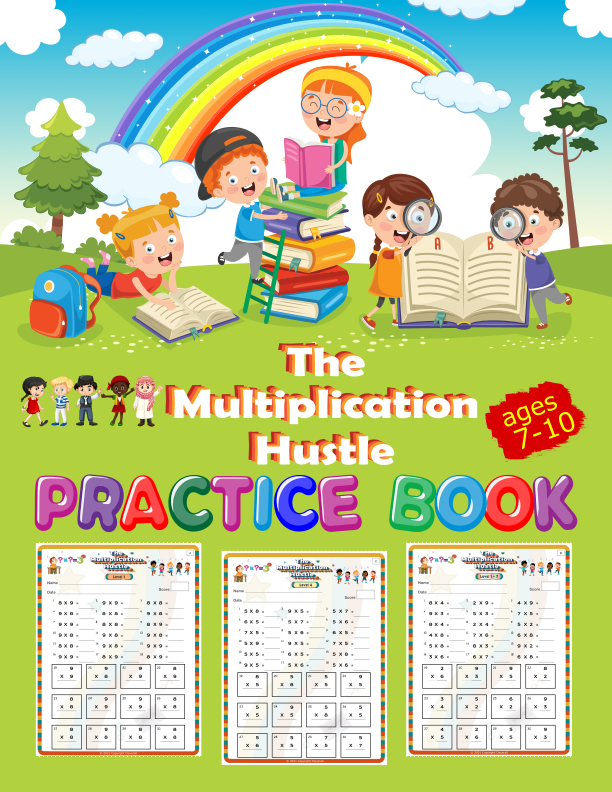It’s the start of the school year – you’ve invested endless hours perfecting lesson plans, organizing supplies, and setting up your classroom just the way you envisioned it. Your room looks straight out of a Pinterest board. And yet, despite the pristine setting and initial excitement, there’s a cloud forming overhead. A few disruptive behaviors have started to creep in, threatening to rain on your parade.
Sound familiar?
Let’s face it, managing classroom behavior isn’t just about rules and regulations. It’s about building relationships and creating an environment where every student feels valued and understood. That’s where affective classroom management comes into play. And if you haven’t yet dug into this concept, you’re in for a treat.
The Heart of the Matter: What is Affective Classroom Management?
When we hear the term “classroom management,” our minds might automatically jump to discipline, rules, and orderliness. Yet, there’s a deeper layer that often goes unspoken, one that is vital in forming a robust and vibrant classroom environment—this is affective classroom management.
The Essence of Affective Classroom Management
Affective classroom management is the intersection of emotions, relationships, and learning. It’s an approach that recognizes the profound impact that feelings and interpersonal dynamics can have on the teaching and learning process. It’s not just about the ‘what’ of behavior but the ‘why’ behind it.
Emotions in Learning
Think back to your school days. Chances are, the moments you remember aren’t just about the facts you learned but the feelings you associated with those learning experiences. Whether it was the anxiety of being unprepared for a pop quiz, the joy of grasping a complex concept, or the frustration of a challenging project, emotions played a pivotal role in shaping your educational journey.
Research, such as that from the National Association for the Education of Young Children, underscores that emotions aren’t separate from cognition—they are intertwined. When students feel safe, understood, and emotionally balanced, they are better able to concentrate, retain information, and engage meaningfully.
Building Relationships: More Than Just “Teacher and Student”
Relationships lie at the heart of affective classroom management. The bond between a teacher and a student isn’t merely transactional; it’s transformational. When students feel genuinely connected and valued by their teacher, they’re more likely to participate, take risks, and invest in their learning. As highlighted in a study from the Review of Educational Research, positive teacher-student relationships boost students’ academic outcomes, reduce behavioral issues, and enhance emotional well-being.
Understanding Over Controlling: The Empathetic Approach
Traditional classroom management often revolves around control: set rules and enforce them. While structure is undeniably crucial, affective classroom management asks educators to go a step further—to seek understanding. Why did a student act out during a particular activity? What underlying emotions or experiences might be influencing their behavior?
By adopting an empathetic lens, educators can discern the root causes of behaviors, allowing them to address issues more holistically. Instead of merely suppressing unwanted behaviors, they can guide students towards emotional regulation, understanding, and personal growth.
Building the Foundation: Affective Strategies
- Emotion Coaching: This technique involves recognizing a student’s feelings and teaching them to understand, express, and regulate those feelings. Instead of simply saying “Stop that!” when a student misbehaves, try asking, “It looks like you’re feeling frustrated. Can we talk about why?”
- Restorative Practices: Gone are the days of punishing without understanding. Restorative practices encourage dialogue between students and teachers to understand the root causes of behaviors. It’s about repairing harm and building stronger relationships. You may want to check out these “must reads” on restorative practices:
- Positive Reinforcements: Recognize and praise the good. Instead of always catching them out, catch them being good. This doesn’t mean you should throw a parade for every minor achievement, but genuine recognition goes a long way.
- Class Meetings: Dedicate a time each week to sit with your students and discuss class issues, brainstorm solutions, and celebrate successes. This practice gives students a voice and fosters a sense of community.
- Be A Role Model: Kids are like sponges. They will often mimic your behavior. Show them respect, understanding, and empathy, and you might just find they start to reflect these values back.
Delving Deeper: Strategies for a Flourishing Classroom Environment
In the ever-evolving world of education, teachers are not only imparting academic knowledge but also nurturing students’ socio-emotional development. Let’s dive into these research-backed techniques that promote a positive classroom environment, where mutual respect and understanding thrive.
Emotion Coaching: Navigating Emotional Waters
Emotion coaching is akin to equipping our students with an internal compass. By recognizing and validating their feelings, we teach them to navigate their emotional world. This technique is more than just a reactive approach to misbehavior; it’s proactive guidance. Instead of a reflexive “Stop that!”, imagine the deeper understanding achieved by inquiring, “It seems like you’re feeling upset. Would you like to talk about what’s bothering you?” This approach not only addresses the immediate behavior but also cultivates emotional intelligence, setting students up for long-term success in interpersonal relationships.
Restorative Practices: Mending and Strengthening Bonds
Shifting from a punitive to a restorative paradigm, we’re ushering in an era where understanding supersedes punishment. It’s about diving beneath the surface of disruptive behaviors to understand the underlying causes. By fostering a dialogue between students and educators, restorative practices aim to repair harm, rebuild trust, and strengthen the fabric of the classroom community. This isn’t merely about ‘fixing’ behaviors; it’s about nurturing responsibility and empathy.
Positive Reinforcements: The Power of Authentic Praise
Humans, irrespective of age, thrive on validation. Positive reinforcements work on this very principle. Celebrate the moments when students showcase the values and behaviors you wish to see more of. It’s not about excessive praise for every small deed but authentic recognition. A simple “I noticed how patient you were during group work today, well done!” can amplify desired behaviors more than any reprimand could deter undesired ones.
Class Meetings: Fostering Collective Ownership
Holding regular class meetings serves a dual purpose. It not only addresses classroom issues but also instills a sense of ownership among students. By dedicating a time each week to sit in a circle, share concerns, brainstorm solutions, and celebrate collective victories, students begin to view the classroom as ‘our space’. It’s democracy in action, teaching them valuable lessons about collaboration, responsibility, and community building.
Be A Role Model: Reflections in the Classroom Mirror
Remember playing ‘pretend’ as a kid? Children are innate imitators. They absorb behaviors, attitudes, and values displayed around them, especially from authority figures. As educators, our actions often speak louder than our words. By consistently embodying respect, patience, and empathy, we’re setting a living example for our students. It’s the most organic form of teaching, where students, inspired by their role models, naturally gravitate towards reflecting these positive behaviors.
Turning the Tide: Reclaiming Your Classroom
Begin by self-reflecting. What vibes are you sending out? Students often mirror the emotions and energy they perceive. If you’re stressed, they’ll pick up on it. Keeping a positive, open demeanor can work wonders.
Next, build bridges. Talk to those disruptive students. Find out what’s going on in their world. Often, their misbehavior is just a cry for attention or a reflection of issues they’re facing outside of school.
Lastly, consistency is key. Keep up with your affective strategies. Sometimes, it might feel like you’re not making progress, but change often happens in the background. Stick with it.
Conclusion
Ah, that gleaming classroom at the dawn of the academic year! Its neat rows, pristine whiteboards, and that invigorating scent of fresh promise. But let’s step back and remember, the true allure of your classroom wasn’t just its visual appeal—it was the endless horizon of possibilities that lay within.
Your classroom is not merely a physical space delineated by four walls and a ceiling. It’s a dynamic ecosystem, a vibrant tapestry of varied experiences, aspirations, dreams, and challenges. It’s a sanctuary where young minds come not just to acquire knowledge but to shape their worldviews, foster relationships, and craft their future selves.
Of course, like any ecosystem, your classroom will face its share of storms. Disruptive behaviors, misunderstandings, and conflicts might sometimes cloud the harmonious skies. But here’s the silver lining: within these challenges lie hidden reservoirs of opportunities.
Every disruption, every unexpected outburst, every test of patience is a chance to delve deeper, to unearth the underlying causes, to foster dialogue, and to rebuild even stronger. Affective classroom management isn’t about merely navigating these storms—it’s about harnessing their energy to propel the ship forward.
With the compass of empathy, the anchor of understanding, and the sails of proactive strategies, you have the tools to turn every challenge into a learning experience, both for your students and yourself. As we sail ahead in this academic odyssey, let’s pledge to ensure that our classroom continues to be a beacon of hope, a testament to resilience, and a cradle of holistic growth.
To all the educators reading this, as you stand on the deck of this grand voyage, navigating the waves of classroom dynamics, always remember: the journey is as valuable as the destination. And with determination, compassion, and the right strategies, there’s no storm you can’t weather. Here’s to a year of exploration, discovery, and triumphant growth. You’ve got the helm, captain. You’ve got this! 🌟


